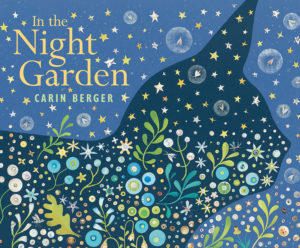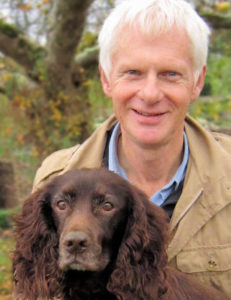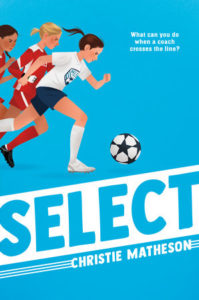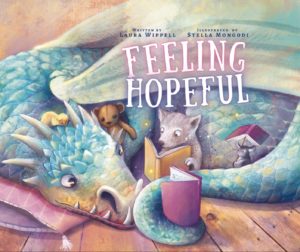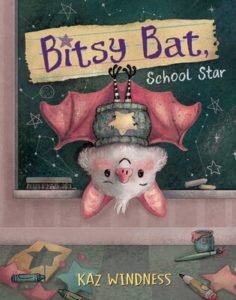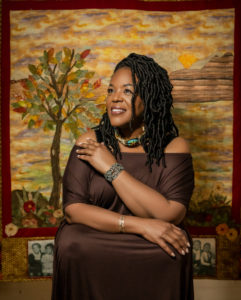“Unpacking the Layers of Meaning Hidden within a Picture Book”
On its face a picture book can seem like a simple thing. After all, most picture books are composed of a mere 16 spreads and a handful of words, plus a jacket, a case, end papers and a title page (all worth taking careful note of!). And yet a good picture book is a multi-layered, complex balancing act with many elements. Ideally, it works on several levels with layers of meaning woven within it that are revealed with repeat readings.
As an author and illustrator, I am fortunate to be able to toggle between visual and textual storytelling and allow a kind of play between the words and pictures. I can build secrets within the illustrations that continue to reveal new things upon multiple visits. I create my collages by hand, working with vintage ephemera, a material that I choose because I love the fact that each piece comes with built-in, hidden stories. One more layer of complexity. My goal is to build depth within my books, so that when they are used in a classroom, they can help foster meaningful discussions, cultivate careful observations, and to deepen visual and textual literacy. In the Night Garden, at first read, might seem to be simply a good night book. It has a lulling rhythm and takes place at night and ends with the phrase “Sleep tight.” An alert reader will notice a black cat who is on every page, and who chaperones the reader through the story, and functions as the narrator. The reader might also notice the passage of seasons within the illustrations. Certain spreads have interesting treats waiting to be discovered, for example the “visual onomatopoeia” in the illustration of the crickets and bullfrogs songs. Or the fact that hidden in the spread of the girl’s bedroom at the end of the book, there are objects from all of the previous spreads. Can you find them?
There are personal nuggets hidden within my books as well. I am a long-time fan of Al Hirschfeld’s illustrations. He always included his daughter’s name, Nina, within his illustrations. I have done this as well. The name of my daughter, Thea, is somewhere, hiding within the illustrations in all of my books including In the Night Garden. You will need sharp eyes, but I bet you can find it. Also keep an eye out for the letter T…as in Thea! In the Night Garden was in part inspired by Thea’s fear of the dark and difficulty in going to sleep at night. I think many children have some anxiety around this transition, and I hope that celebrating the beauty of the darkness will be useful. We used to lie out on the porch, gazing at the stars and identifying unfamiliar sounds as a way to ease her fear. This became a treasured ritual and part of the inspiration of In the Night Garden. My burgeoning love of gardening also inspired the book. I grew up around talented gardeners and I always longed to have my own bit of dirt to garden in. Now that we have our house in the country, I am insatiable. I find it a delight to watch the changes in the garden as seasons pass. There are often magical moments that happen: There was one early morning where I spotted a trio of fox cubs splashing playfully in our stream, and one autumn dusk when a hoot owl was only a few feet away, gazing steadily at me from our apple tree. We watch the dance of fireflies in the summer, and the whirl of bats that swirl above us in the early evening; we marvel at the silent transformation that occurs after a heavy snowfall. In some ways the book is an ode to Cupcake, the name our daughter gave our house, this place that we love. As you can see, it is deeply personal!
Finally, and also deeply personal, there is a more profound meaning tucked within the simplicity of In the Night Garden. I hope that the book inspires awe and wonder about nature and night time, as well as about seasons and the sometimes dazzling and sometimes subtle transformations that the natural world helps to highlight. I hope it lulls the reluctant sleeper to sleep. But it is more important to me that In the Night Garden works on a deeper level. I hope that the book can spark curiosity and initiate discussions about learning to explore the unfamiliar in a broader sense. I think fearing the unknown is universal, especially in childhood which is filled with newness and uncertainty. It is my deep wish that In the Night Garden can serve as a tool to start conversations about openness to things we aren’t familiar with, and that it will encourage readers to learn about new things, new people, new ideas. I hope that these conversations can help institute an openness to the “other”, something that I think is incredibly important, especially in these divisive times.
As you can see, picture books are not so simple!
Published July 4th, 2023 by Neal Porter Books
About the Book: A gentle, collage-illustrated bedtime read about the often mysterious and always beautiful experiences to be found in nighttime spaces.
In the night garden fireflies look like fallen stars.
Moonflowers unfurl and release their intoxicating perfume.
In the night garden you can lie
on the cool grass and look up to the
millions and trillions of stars…
In the night garden, nothing is as it seems and everything is made new. Blinking stars and pale moonlight might reveal a lone cat tiptoeing across a roof, luminous flowers unfurling in the cool air, a mama fox escorting her sleepy cubs home. Listen closely and you might hear the wind blowing through the trees, the murmur of a slow stream, or the gentle song of crickets and bullfrogs, lulling you to sleep.
Carin Berger is the award-winning author of The Little Yellow Leaf, a New York Times Best Illustrated Book. With soothing words and spectacularly detailed, hand-cut collage artwork, she has fashioned a bedtime book like no other. Curious readers will be rewarded when they look for the mysterious cat that appears on every page!
A Junior Library Guild Gold Standard Selection
★ “In tandem, the text and art endow nighttime with a sense of whimsy and wonder, and for little ones readying for bed, they’ll find comfort and reassurance for sweeter dreams.”—Booklist, Starred Review
★ “Nighttime is the right time for young readers thanks to this perfect amalgamation of soothing text and image.”—Kirkus Reviews, Starred Review
★ “Carin Berger’s sweet, gentle bedtime story is more than just a pretty face; it fully captures the imagination. Using her own garden as a muse, Berger (Finding Spring) takes the unease out of nighttime. . . .”—BookPage, Starred Review
★ “Berger’s attention to detail in the art, alongside her sophisticated and accessible text, creates a magical nighttime world. This spellbinding picture book will undoubtedly hold children in that glorious tension between wide-eyed curiosity and heavy-lidded drowsiness before they drift off to sleep.”—The Horn Book, Starred Review
About the Author: CARIN BERGER is the award-winning author and illustrator of almost a dozen picture books for children, including The Little Yellow Leaf, a New York Times Best Illustrated Book; All of Us; and Finding Spring. She is also the illustrator of Behold the Bold Umbrellaphant by Jack Prelutsky, and Are We Pears Yet? by Miranda Paul. She and her family divide their time between NewYork City and “Cupcake,” their home in the Hudson Valley. Carin spends all of her spare time tending her garden. Cupcake makes an appearance in and was the inspiration for In the Night Garden.
http://www.carinberger.com/
@carinberger on Twitter
@carinbergerdesign on Instagram
https://holidayhouse.com/book/in-the-night-garden/
Thank you, Carin, for reminding our readers about the complexity of picture books and their importance in our society!
